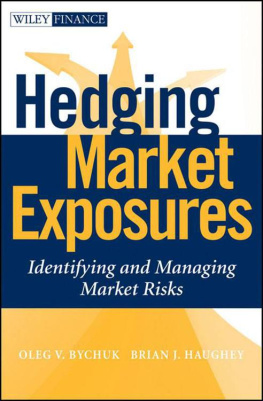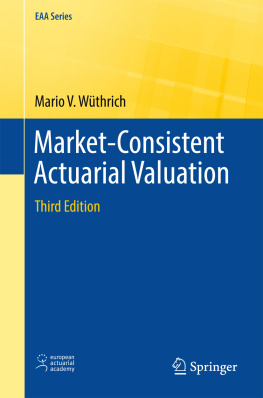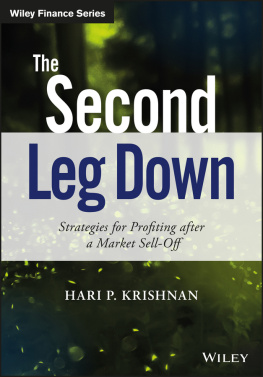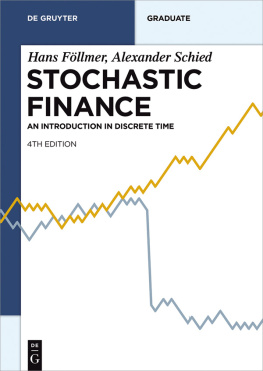Contents
Founded in 1807, John Wiley & Sons is the oldest independent publishing company in the United States. With offices in North America, Europe, Australia and Asia, Wiley is globally committed to developing and marketing print and electronic products and services for our customers professional and personal knowledge and understanding.
The Wiley Finance series contains books written specifically for finance and investment professionals as well as sophisticated individual investors and their financial advisors. Book topics range from portfolio management to e-commerce, risk management, financial engineering, valuation and financial instrument analysis, as well as much more.
For a list of available titles, visit our Web site at www.WileyFinance.com .
Copyright 2011 by Oleg Bychuk and Brian Haughey. All rights reserved.
Published by John Wiley & Sons, Inc., Hoboken, New Jersey.
Published simultaneously in Canada.
No part of this publication may be reproduced, stored in a retrieval system, or transmitted in any form or by any means, electronic, mechanical, photocopying, recording, scanning, or otherwise, except as permitted under Section 107 or 108 of the 1976 United States Copyright Act, without either the prior written permission of the Publisher, or authorization through payment of the appropriate per-copy fee to the Copyright Clearance Center, Inc., 222 Rosewood Drive, Danvers, MA 01923, (978) 750-8400, fax (978) 646-8600, or on the web at www.copyright.com. Requests to the Publisher for permission should be addressed to the Permissions Department, John Wiley & Sons, Inc., 111 River Street, Hoboken, NJ 07030, (201) 748-6011, fax (201) 748-6008, or online at http://www.wiley.com/go/permissions .
Limit of Liability/Disclaimer of Warranty: While the publisher and author have used their best efforts in preparing this book, they make no representations or warranties with respect to the accuracy or completeness of the contents of this book and specifically disclaim any implied warranties of merchantability or fitness for a particular purpose. No warranty may be created or extended by sales representatives or written sales materials. The advice and strategies contained herein may not be suitable for your situation. You should consult with a professional where appropriate. Neither the publisher nor author shall be liable for any loss of profit or any other commercial damages, including but not limited to special, incidental, consequential, or other damages.
For general information on our other products and services or for technical support, please contact our Customer Care Department within the United States at (800) 762-2974, outside the United States at (317) 572-3993 or fax (317) 572-4002.
Wiley also publishes its books in a variety of electronic formats. Some content that appears in print may not be available in electronic books. For more information about Wiley products, visit our web site at www.wiley.com .
Library of Congress Cataloging-in-Publication Data:
Bychuk, Oleg V.
Hedging market exposures : identifying and managing market risks / Oleg V. Bychuk and Brian Haughey.
p. cm. (Wiley finance series)
Includes index.
ISBN 978-0-470-53506-6; ISBN 978-1-1180-8535-6 (ebk); ISBN 978-1-1180-8536-3 (ebk); ISBN 978-1-1180-8537-0 (ebk)
1. Portfolio management. 2. Risk management. 3. Hedging (Finance)
I. Haughey, Brian, J. II. Title.
HG4529.5.B93 2011
332.64524dc22
2011007527
Preface
The 20072010 financial crisis has highlighted the need to identify and control all risks in a financial portfolio, both direct and indirect, and to design and deploy a practical proactive dynamic hedging strategy. Simultaneous adverse moves in stock markets, interest rates, and credit spreads, combined with accelerated company defaults and credit rating downgrades, have devastated many portfolios and, in some cases, wiped out years of gains and caused the demise of storied financial institutions. While some well-publicized losses have resulted from spectacular lapses of common sense and the abandonment of the very basic due diligence principles, most could have been contained by sound risk management.
In this book the authors, who have successfully managed through the turmoil a complex, highly leveraged portfolio of asset-backed securities with significant equity, fixed-income, credit, and other exposures, offer a practical guide to the triad of identifying , quantifying , and managing market risks. These three fundamental elements of the risk-control process have not previously received the attention they deserve. Indeed, the tasks of identifying and quantifying risks and then selecting an optimal hedge, when there is not a perfect one, are just as, if not more, important as understanding the intricacies of exotic derivative valuation, but are usually overlooked. This book expounds the three elements of the risk triad by focusing on applied risk management as opposed to risk measurement .
Like the proverbial wolf in sheep's clothing, many apparently safe investments may contain hidden, and sometimes unexpected, hazards: hedge counterparty exposure, reliance on an insurance guarantee, and performance triggers. In addition, in many actual situations the market exposures of a portfolio of complex assets can be uncertain and, when identified, the appropriate hedges may be difficult to size and implement. Even the detailed composition of the underlying assets is often unavailable or available only with a time delay of months or even quarters, either due to lack of transparency or because of practical limitations. The authors illustrate these challenges and suggest tools for their analysis and mitigation.
In the wake of the Great Recession, there has been a flurry of legislative activity aspiring to devise a regulatory structure that would preclude a reprise. In the end, one cannot legislate away financial crises any more than one can abolish earthquakes; human society will have to live with both. But just as strict building codes can minimize casualties in a tremor, so sound risk management can limit financial losses.
While this book's primary focus is on market risk, all types of risk (financial, market, credit, counterparty, operational, legal, reputational) are interconnected, and a portfolio, and indeed a firm, manager should be concerned with all of them.
Introduction
PORTFOLIO RISKS
We live in an uncertain world, with one consequence being that there is no such thing as a risk-free investment. No matter where we choose to invest our assets, they will be exposed to financial risk in one form or another. Hoarding our life savings under a mattress, for example, will expose us not only to the risk of loss due to fire or theft, but also to the risk of loss due to inflation, because the purchasing power of our savings will likely decrease over time.
An investor, aware that inflation can erode his wealth, who seeks to earn a positive return by investing in an asset faces other, less obvious, hazards. While an investment that he could make in domestic government securities will pay a return that may, although is by no means guaranteed to, exceed the rate of inflation, so preserving or increasing his purchasing power, there is a very real, even if small in developed economies, chance that a given government will abrogate its obligations and pay none, or only a portion, of the promised return on its securities. Investors eyeing the credit markets in Europe at the end of 2010, for example, were particularly aware of this possibility, with credit default spreads reflecting a great deal of market unease and uncertainty. One lesson of the recent financial crisis is that what may to the unwary appear to be a conservative and secure investment may, in reality, be like the proverbial wolf in sheep's clothing, exposing the investor to very real hazards, such as liquidity, correlation, and contagion risks, and exposure to hedge counterparty creditworthiness, or perhaps to reliance on performance triggers and insurance guarantees.
Next page










